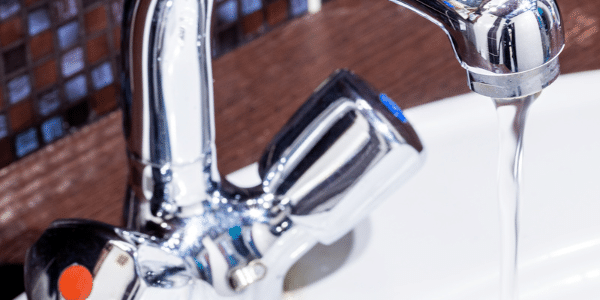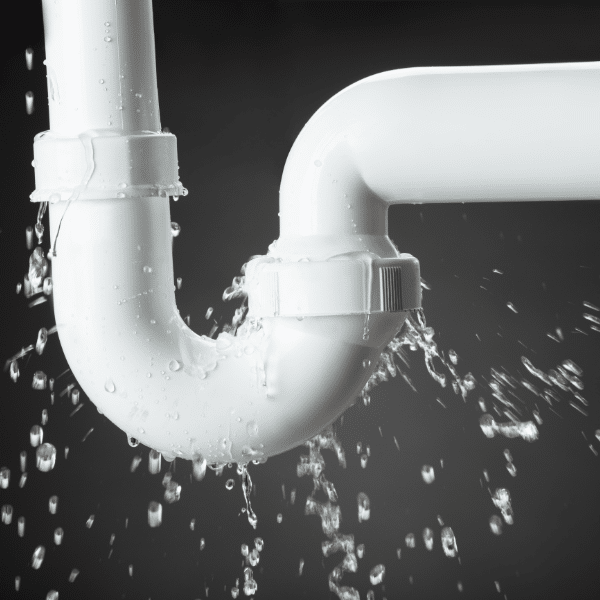
Why Is My Water Pressure Low? Six Common Causes and How to Fix It
Published: May 29, 2025 / Last Updated: July 30, 2025
Have you ever wondered, why is my water pressure low? Low water pressure can turn everyday tasks—like showering, washing dishes, or doing laundry—into frustrating experiences. If you’re in Washington, DC, or the surrounding area and have noticed a sudden or ongoing drop in water pressure, you may notice low water pressure during these daily activities. We are here to help. Let’s explore some of the most common reasons your water pressure might be low, what you can do about it, and when to contact a professional for help.
Introduction: Understanding Water Pressure
Water pressure is the force that moves water through your home’s plumbing system, ensuring that every faucet, shower, and appliance gets the flow it needs. Measured in pounds per square inch (PSI), the ideal water pressure for most homes falls between 40 and 60 PSI, though some systems may operate safely between 30 and 80 PSI. If you notice water pressure issues—like weak flow from your shower or slow-filling sinks—it’s important to understand what might be causing the problem.
A pressure gauge is a simple tool that can help you check your home’s water pressure. By attaching the gauge to a hose spigot or outdoor faucet, you can get an accurate reading of the pressure in your plumbing system. If the reading is outside the normal range, it could point to issues such as clogged pipes, corroded pipes, or a malfunctioning pressure regulator. Sometimes, the problem may even stem from the municipal supply. Regularly monitoring your water pressure and inspecting your plumbing system can help you catch low water pressure issues early, keeping your home’s water flow strong and reliable.
1. Partially Closed Shut-Off Valves
If your water pressure has suddenly dropped throughout your home, one of the first things to check is your shut-off valves. Homes typically have two main valves that control water flow: the main shut-off valve (also known as the main valve), which is typically located inside the home where the main water line enters and is often referred to as the main house shutoff valve, and the water meter valve (typically found near the street or curb in a utility box).
Solution:
If either of these valves is even slightly closed—due to recent plumbing work, accidental bumping, or age-related stiffness—it can significantly restrict the amount of water entering your home’s plumbing system. This partial closure reduces flow and results in noticeably lower pressure, making it a common cause of low water pressure issues. Ensuring the main shut-off and water meter valves are fully open is a simple, yet often overlooked, step in troubleshooting low pressure.
If you’re unsure where to look or how to correct the valve, a Magnolia technician can inspect and adjust it safely.
2. Clogged Pipes or Fixtures
Over time, mineral deposits, sediment, and even rust can build up inside your water supply pipes or fixtures, restricting water flow. This is especially common in areas with hard water, like parts of DC.
Hard water contains high levels of dissolved minerals—primarily calcium and magnesium. While it’s not harmful to your health, it can wreak havoc on your property’s plumbing. As hard water flows through your pipes, these minerals gradually accumulate and form scale inside the plumbing system. This buildup narrows the interior of pipes and can clog showerheads, faucets, plumbing fixtures, and appliances, ultimately reducing your home’s water pressure. Homes with hard water may also notice soap not lathering well, spots on glassware, or increased wear on water heaters and dishwashers.
Solution:
Try cleaning faucet aerators and showerheads first to address low flow caused by buildup or clogs. If that doesn’t help, a professional plumber from Magnolia can assess and flush your plumbing system.

3. Leaking Pipes
Leaks waste water, in turn, increasing your water bill. A leaky pipe can also reduce water pressure, as water escapes through cracks or holes before reaching your fixtures. If there is more than one leak in your plumbing system, the pressure loss can be even more significant. Neglecting leaks may eventually lead to a burst pipe, causing severe water damage and disruption to your plumbing system.
Solution:
Check for visible leaks under sinks or around your home. Call us to inspect the lines with specialized equipment if you suspect a hidden leak. If you notice signs of water damage or cannot locate the source, call a plumber for professional assistance.
4. Failing Pressure Regulator
Some homes in DC have a pressure regulator, which maintains safe water pressure levels. A pressure regulator, also known as a water pressure regulator or a pressure-reducing valve (PRV), is a plumbing device installed on the main water line in your home. Its job is to reduce the high pressure from the municipal water supply to a safe and consistent level for your household plumbing system. Without a regulator, pressure that’s too high can cause damage to pipes, appliances, and fixtures.
When a pressure regulator begins to fail, it may no longer maintain a steady pressure—causing noticeable fluctuations. You might experience very strong water flow or frustratingly weak pressure surges, sometimes within the same day. Over time, a faulty regulator can lead to leaks or wear and tear on your plumbing system, so fixing or replacing it can help restore water pressure to normal levels.
Solution:
Replacing a faulty pressure regulator is a job for a licensed professional. If your pressure changes suddenly or seems inconsistent, contact us with your water pressure questions or request an estimate.
5. City Supply Issues
Sometimes the problem isn’t inside your home at all. Utility work, high demand, issues with the municipal supply, or problems with the main city supply pipe can reduce your pressure temporarily.
Solution:
Ask neighbors if they’re experiencing the same issue. If they are, call your water supply company to report or inquire about known issues in your area. Likewise, many municipal water suppliers provide an online service alerts map which allows customers the ability to report issues and share updates about outages or maintenance work affecting water pressure.
6. Old or Corroded Plumbing
If your home is older, particularly if the property was built before the 1960s, it may still have galvanized steel pipes. These types of pipes are prone to internal corrosion over time. As rust and mineral buildup accumulate inside the water pipe, they reduce the diameter of the water passage, significantly restricting flow and leading to low pressure throughout the home. In severe cases, it can also affect water clarity and taste.
Solution:
Replacing outdated plumbing with modern materials like copper or PEX (cross-linked polyethylene) can restore full water flow, enhance water quality, improve your home’s water pressure, and reduce the risk of future leaks or plumbing failures. Not only does this upgrade improve performance, but it can also boost your home’s value and appeal, especially if you’re planning to sell.
When to Call a Professional
If simple fixes or diy solutions don’t resolve your low water pressure, or you’re not sure what’s causing it, don’t wait for a small problem to become a major one.
Our experienced plumbers at Magnolia are here to help homeowners in the DC area diagnose and resolve any water pressure issue efficiently and affordably.
Contact Us To Get Your Water Flowing Again
Need help now? Contact us or call us at 888-829-8510 today to schedule a pressure inspection or plumbing service. Whether it’s a quick fix or a full system upgrade, we’ll get your water flowing smoothly again.
Share This Article:
Request An Estimate
Contact us for a free estimate. It's just one form or phone call away!
Join Our Newsletter
Submit your email to receive promotions.
